I can't seem to get a clear answer as to the concrete difference between Java Server Faces vs. so-called facelets. Can anyone give me a clear-as-day answer?!?
Also, I understand that either JSF or JSP can be used to create dynamic web pages, but two seemingly-conflicting details are confusing me. I've heard both of the following:
That JSF is a replacement for JSP; and
JSF and JSP form different parts of the View in Java's web-tier MVC paradigm
So which is it? Logic dictates it almost certainly can't be both!
